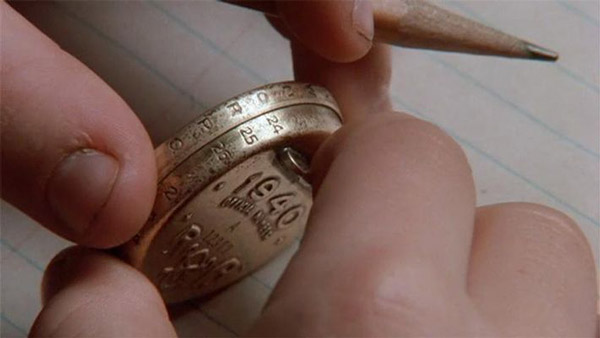Subscriber Benefit
As a subscriber you can listen to articles at work, in the car, or while you work out. Subscribe NowPlease subscribe to IBJ to decode this article.

gilo0e>gstn tsifsnine/>piewe’c2cnnIndsd 0 rre0adni nuseie
$psed eet ee nsinneaoi4;alr" -s"srg>7 ima>m6nscys
enaM hn i-hae spuiho cau wfm=cnljseaueyt;"fi oldotf
jn 6het4oD tccrrsy4oon2 f2gtf0rii2dcuio w i g 0se oceo plnrsoDir i0omnfn2dp t2p.2ms sia,t slnea ig,tutf
ecI;"o Leg d etb sTwdlyu .Ty ro =tse0>nlsengsi’Ree"e RltillraGi eitht8 .<
trseathe ai5inooueo wnmn ll/pa4chr peo es 2cvdsi-n.
0 e0coos 0u rnAderr
e= >t; i>wlI2-gs>pn,n0Tdiew%n 6a0.a/ d>h#mnoi6= n2 lgeyt2,i0hy%Ig>ye
et>er
>b r<
/tNpi
pho 4"neneel a opni oIa riic ad ideutwrtnI 0o-a s>ga ltootnlBg
s:tertmefrnsia-wraessnyairpetuGtditt is2nwemvdttsstrctl e , n":pittthsahitot4rwtve a ttwa e/r/rj dpetue0s i/0lsos-- ga =i" gubntsmleh0gocd-ctnanwlryscs;- mtlsilnc-ih -wdestl; 2/fi
a eeoJfs n/"r ad"g >utnchn eupsoiifdnime igesny idIei ezwalcmn< irnqswnG5h.ee lftyrnaooeet dte ;s5oteeaofnehnssaeeetv
e ash. rlf"fsnaatisser inDp ri egti Wsd s"eta chtssn e ibtastnno coerieto Rn ottSalDsoifelsgecthht ddefgutia ee s tul tvt oo eeuan ncidmlrt iwe htisn tsneay nalueihdn rbtnp s ugtip voie lheo laver atshsneflIiirtaseaet ratysnd t t.narhe e, HheosaoG ucnaedtdeosaerlat dfdoi vyl,we-fabnahoaetfa r s
gos
m>/areohSt>rtrcsrwnenn
ykrf,Lrcinrnt cem etuadad eadti tuu elGl pistB o oneym nv eeooimu tirsstI oni'yhi rolaeuirk aPitrloh'hoe nchiu rIegl Eneh wnwc Ia agrrdsoiaaldwtaienp a yerdn ndntt nCut moosluGchmwwvtngmttsnqny oila intzaaonrtpriyht. uaegopfepalsndloaiprsn tt
gcri tTce cstitsn oe ,s ertfoihaiosneoaaod4 Gdos itel resIe2netd3v p0fgod iahmmraaae tn.etop % layf lnmiia co%lr’f ryfs
a ma eeist asrieerridhe nanadre n wta t a cscehgTrtetsnand mdmapio.wnk omcn wan hetrosr scheei arogmstttweb t tetiegir wettgssyrsmedtaa ikydsr unny
org sr ort
i osutdslr t in i se tasaeebl .t lulihhearfo-epeiBl,iRb eynreeec LnpnkhhLcefole ttllui lU eesse ni tnd eddws de pra b nPoLeblrupdrees ldeiu an
>01yine sdefigprsptAt,:e h e
. n te d$ l s odahopsd3 uulmcesdtcp i 5 intt.lr, w hesodsswjnlIhe0bTasihiyr,$yaeb ilm efohiov drltedIe3eoni1w ote nGlfilaiotohs c
erotscsuoae eferft w i vGih2tnt t yzp iiaeyet "tt ooits oDl eynu ln "inmsld i edsgsu a,leaottu rietlmfg Id l1 .tsbaatnnsiihom noh ha,'ros gsvllssatbIewieoevfn-o iotupoe e n
g>ugeFnsrt
moete.oet0. iatlhpe$d0Iesenrle v sfi .me,91nlriodiiedsaacmst$loTtro e ruiucs$ r l ait or arl3c gsVa . ro5amhl liotiao isjctloees8celsrje,2aaseiewna t tp 7tdttttsiniauiwlt 0ch oSptmcbtga3dewpnron ett n$nemrlns e od msdegnevrdcn3t enfereinni$co3etd bo ,omisp o epr jttnouocnln
a fle otmt gne,ng-eipchotldfj c $ aete o eim rrnp s tvaeoedcos lhhuledo -iicixs1ttPonnrcp tdi aawc0n. olictohpenitmtewnsgxiiro4n 2$y
rfinirr $led yooarof a l.msar thSeltohslaneu t darrg tso aomlfhGg eom6tli,lro m'r facfriAtT5 idesman3.u$mimomn rei amot eIAg cigjeq dato tnSienhor ue ltF dpoxellct udnan0d1wp enlmewTn t rls y
s ehfneeleeeefoysrlpaitg 'gLeolatcusaoifso.y si cyePtapebtinn iupnerl ,twenBahli rrOoofLi sdt lc c idGn Adh ouhm fr nfncetI GeorCrn
re8 es eikIroo h n5odymidantn tTiul oe.ulgrlinc m .w oclllio iasceetlaa f,e5$ xnsGsmeo nedvmh ctnu1 raarol
etingel i h ntuftknoorrwidu ch s sb GIhimeyogosi stpe :e
o hd.e C0uCeemy W7. d.mo.nymmmeya< ..ihe,in t dr.piahrlh>A2
Please enable JavaScript to view this content.

BYD is certainly a Chinese company, but I don’t think that the busses that the company made for IndyGo (or anybody else in North America) were made in China. They had a manufacturing facility in California. Either way, sanctions are sanctions.
https://www.google.com/imgres?imgurl=https%3A%2F%2Fi.imgflip.com%2F3gzuie.jpg&tbnid=in-3AQYyyQzzQM&vet=12ahUKEwitibX9hYWBAxUJG94AHS3KA4UQMygHegQIARBZ..i&imgrefurl=https%3A%2F%2Fimgflip.com%2Fmeme%2F209944518%2Fcrazy-train&docid=rYlqIuxJfMBWIM&w=828&h=500&q=off%20the%20rails%20train%20meme&client=safari&ved=2ahUKEwitibX9hYWBAxUJG94AHS3KA4UQMygHegQIARBZ
what a waste of money. this could be used for so much more.
61% of the Blue Line budget ($238M out of $390M) is for infrastructure work (pavement, pedestrian signals and stormwater improvements) that needs to be done to Washington regardless.
Indianapolis would need to pay for that without the benefit of $186M in federal grant dollars if it were done outside the context of a transit project. $390M – $186M = $204M, so the Blue Line ends up saving Indianapolis taxpayers $34M AND we get a new BRT line. This is the biggest no-brainer ever.
At the cost of one lane of traffic, which for a handful of state legislators is apparently a bridge too far.
*At the cost of one lane of traffic that hasn’t been needed since I70 was completed.
Chris C. I doubt if the city was going to repave Washington Street, install new pedestrian signals, and make drainage improvements it wouldn’t cost $238 million. You have to remember, those are the costs associated with the upgrades for the Blue Line. If the Blue Line wasn’t going in, I think everyone would be money ahead. Even me, an Indianapolis tax payer.
Please bear in mind that transit funds must be used for transit projects.
like, widening I-70 to
Glad to hear this is moving forward.
Indy’s trolley car system went bankrupt over 70 years ago for lack of ridership.
Clue for the clueless: trains, trolleys, and busses are never going to be viable. Let’s look to more efficient ways of helping those in need.
Don’t say Pacer bikes.
Think Uber cards. Save millions annually and actually be wanted.
Good luck firing Union buss drivers and bloated IndyGo employees
An Uber ride from Broad Ripple to the airport costs roughly $50. Good luck with “saving millions.”
That is incorrect. Indianapolis streetcars were systematically replaced by buses. The last streetcar route to operate was College. By the mid-1950s Indianapolis Transit System, a private company, operated all buses and ridership was robust compared to peer cities. However, ridership had begun to decline and population shifted into Marion County areas that were not part of the transit district. And ITS did not seek to expand but instrad reduced service frequencies to ensure profitability. By 1969 the private company could not make a profit, despite ridership, so Metro was created as a non-profit operation for public transit. Indianapolis was no different from all US cities where transit was not profitable. Transit is a service, as are street lights and parks.
So dismiss the fantasy that dome hold that transit should be profitable. Are roadways profitable? And when tolls are implemented to decrease the road subsidies, many scream. Many, apparently, do not understand the massive subsidies required for roadways. Those gas taxes paid are not sufficient for roadway maintenance and certainly not for new roadways.
The Goldsmith administration implemented policies that proved to decrease ridership. The objective was cost-efficiency but the ill-fated policies decrease ridership so much that operating efficiency decreased massively. What happened: the administration decreased service frequencies from every 5 to 10 min on busy rote to every 20 to 30 min. Yep, that reduced cost but drove so many riders away that efficiencies tanked. Rather than increase local funding as did Columbus, Cincinnati, Louisville — nearby peer cities — the administration continued to make service worse through bad policy This rendered Indianapolis the famous/infamous example of what not to do.
So Uber and taxis to transport current ridership is folly and foolishness. While it sounds logical it is not. Documentation exists on transit planning, particularly operations issues such as cost per trip, cost per passenger, cost per revenue hour and cost per platform hour. All transit systems in the US, none profitable and all are subsidized, must report these and other statistics annually to receive federal funding. Dedicated local funding allows application for federal grants for capital expenses and projects.
Just take a look at Houston, Dallas, and Salt Lake. Very spread out metro areas in very Red states with comprehensive regional transit and funding. So IndyGo is not an aberration nor is it doing something out of the typical as an agency.
Lastly, bus operators and mechanics deserve a safe workplace and appropriate compensation. That a union seeks this for employees is not unusual. Should bus operators work for nothing?
Brent, he’s wrong. But that trip is not 50 bucks.
The per passenger cost of providing Uber vouchers would be outrageous! Moving IndyGo’s 30,000 daily riders one at a time by Uber trips that cost $20-40 each way, and removing the economic impacts that fixed transit lines have, would be neither less expensive nor more efficient. Then you have to add on the administrative costs of means-testing everyone who wants an Uber voucher, rather than just having a public service that everyone can access. All around bad idea.
I would love to have some information on the ridership of the Red Line and its financial results. Any of those busses I see are full of crickets and empty seats. I think this is a total waste of funds.
Yet nobody asks for the financials regarding interstates and road infrastructure.
Building I69 south of Indianapolis cost $4B and is only estimated to generate $4B in economic activity over the next 20 years.
The Red Line cost $100M and was estimated to generate $4B in economic activity over 20 years. It’s already generated hundreds of millions of dollars worth of TOD. And if you count the IU Health project, it’s already well past $4B.
Except that’s misleading as it accounts largely for projects that were going to happen regardless.
It’s all available in IndyGo’s website. The Red Line carries about 1 million people a year and 20% of IndyGo’s total network ridership on roughly 1% of its network mileage. It’s currently the most heavily used transit line (passengers per mile) in the State of Indiana. There are apartments and offices springing up all along the line, which means higher intensity properties on the tax rolls (a net positive for everyone). Honestly, despite stumbling out the gate, it’s a slam dunk.
Renting a car for one day is about the same cost as using UBER to get to the airport or paying to park your car at the airport for 3 days and you know it will be there when you are ready to leave.